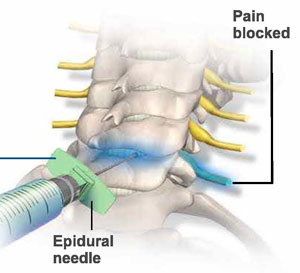

Schwartz is board-certified in both Pain Management and Anesthesiology, and he tells Romper, "The most common problems aren't dangerous, but instead disappointing." Meaning, they're not deadly, but you're not getting the pain relief you thought you would. Gary Schwartz interventional pain physician and Director of Acute Pain Management at Maimonides Medical Center in Brooklyn, New York. Somewhere between 1 in 6,000 and 1 in 80,000 (yes, 80,000) women will experience either temporary or permanent problems related to anesthesia. And, according to an enormous study published in the British Journal of Anesthesia, the risks are lower than ever. Well over half of women will get an epidural during their labor, according to the Centers for Disease Control and Prevention (CDC). It's important to note that in general, epidurals are a very safe form of pain relief. In the interest of fairness and objectivity, there are some epidural side effects after giving birth that you should be aware of so you're fully prepared. This is a fat-filled area that covers the spinal cord to protect it and the surrounding nerves from damage. The medicine is injected into the epidural area. But there are risks, as there are with any medical procedure. In the simplest of terms, an epidural corticosteroid (steroid) injection is a way to deliver pain medicine quickly into the body with a syringe. Because for me, that medicine was some Hogwarts magic brought to New York City.

After having one unmedicated labor and delivery and juxtaposing it against the delightful occasion that was my delivery with my daughter, I would make out with a cat for an epidural. Getting an infection from the epidural procedure, such as an epidural abscess, discitis, osteomyelitis or meningitis. Less than 1 of people experience this side effect. Experiencing a severe headache caused by spinal fluid leakage. I'm not going to lie, I bow at the altar of the epidural. Having low blood pressure, which can make you feel lightheaded.


 0 kommentar(er)
0 kommentar(er)
